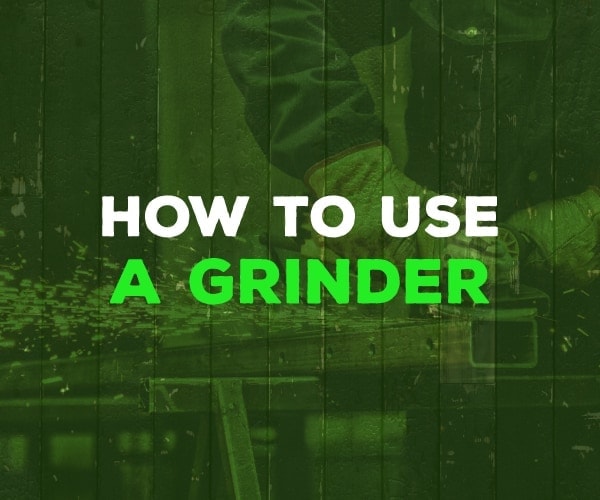The angle grinder is a truly indispensable tool for many different projects. In fact, some tasks, such as cutting tile around an outlet, or removing old mortar are virtually impossible without one. Angle grinders are also among the most dangerous and intimidating tools there are.
Lucky for you, our guide has everything you’ll need to know about how to use a grinder. By the time you’re finished reading this quick crash course, you should be able to grind, polish and cut with an angle grinder with ease.
What You’ll Need
Depending on the type of project you’re working on, the materials you’ll need may vary a bit. But, these are the basics you’ll need for any job:
- Angle grinder
- Various wheels for cutting, grinding or polishing
- Safety goggles
- Work gloves
Step I: Selecting a Grinder
You’ll quickly find that there are many angle grinders on the market that are designed to fit the needs of different craftsmen.
Electric grinders are the most popular type, and they’re also the most powerful and widely available. Pneumatic grinders use air power instead of electricity to power the tool, and they’re ideal for jobs in tight areas where an electric grinder may not fit.
For most DIYers, an electric grinder is the most versatile option.
Step II: Read Up on Your Angle Grinder
This is by far the most critical step when it comes to how to use a grinder.
Angle grinders spin at extremely high speeds that far exceed the speeds of most other power tools, making them even more dangerous to use. An angle grinder is a serious tool that must be handled with extreme care.
Familiarize yourself with all the characteristics of your angle grinder, learn the ins and outs of any safety features, and learn how to change wheels for different projects.
Step III: Changing Wheels and Handle Orientation
Different jobs call for different wheels, and you’ll need to know how to change them to get the most out of your new grinder. While the most popular attachments are usually in the 4-4.5 inch range, there’s wheels available in much larger sizes as well.
This page provides a concise summary of the different types of wheels and their uses.
Regardless of the brand and model of grinder you have, the first thing you’ll want to do is make sure that the grinder is unplugged, or it’s battery is removed.
Somewhere on your tool will be a button that locks the wheel in place so that it can’t spin. You’ll need to press that button to remove the wheel.
With the button pressed, use the wrench that came with your grinder to remove the clamp nut that holds the wheel in place.
Now you can remove the wheel, and replace it with the wheel you need for the job. Keep in mind that some wheels may require you to use a different clamp nut or reverse the orientation of your existing clamp nut to work properly.
You’ll also want to make sure that the handle is on the proper side of the grinder. All angle grinders come with a handle that can be set up on the left or right side of the tool depending on whether the person using it is left or right handed. If the handle is on the wrong side for you, just unscrew it and screw it into the opposite side.
Step IV: Safety
I can’t reiterate this point enough: angle grinders are serious tools that can become very dangerous if used improperly or carelessly.
Their extremely high RPM makes them even more dangerous than other power tools, so it’s important to exercise extreme caution. Before you begin any job, be sure that you’re outfitted with work gloves and safety goggles. You may want to consider hearing protection as well.
Also, it may seem like common sense, but you’d be surprised by how many people put themselves in dangerous positions when working with an angle grinder. Always make sure the piece you’re working on is properly secured either with clamps or a bench vise.
Step V: The Right Angle For the Job
Depending on the task at hand, the proper way to use the angle grinder is going to be different.
For example, when cutting, you’ll use the grinder head on so that the cutting wheel is perpendicular to the surface you’re cutting. When using the grinder to polish or sand, you’ll want to hold the grinder at a 5-10° angle to the surface you’re working on.
Every grinder is different, so be sure to consult the owner’s manual if you’re unsure how you should approach a particular task.
Final Word
Angle grinders are an incredibly useful tool that belongs in every serious DIYers toolbox. When it comes to how to use a grinder, the tips above will help point you in the right direction. Whenever you’re working with power tools, and especially when working with an angle grinder, make sure you’re taking all appropriate precautions to keep yourself and your work safe.

